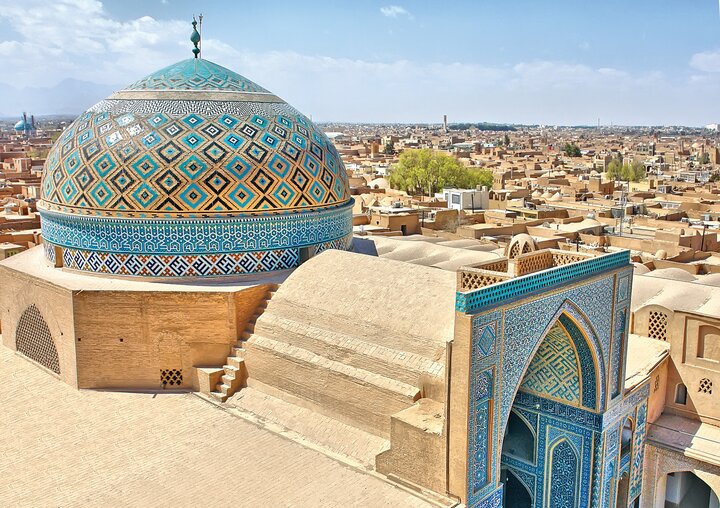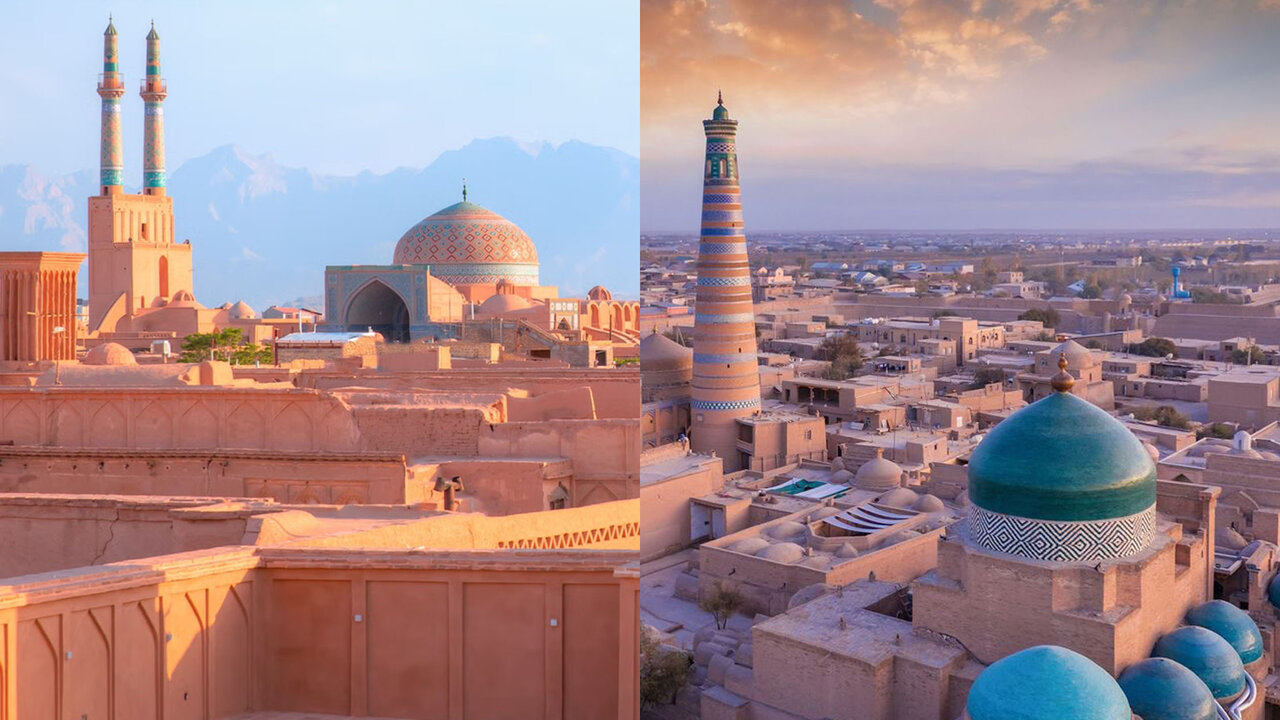TASHKENT – In the vast expanse of Asia, among the myriad of ancient cities, two stand out for their striking similarities and rich cultural heritage: Yazd in Iran and Khiva in Uzbekistan.
Though separated by miles of desert and mountains, Yazd and Khiva each offer their own unique glimpses into the past, with architectural wonders that tell stories of resilience, faith, and artistry.
Whether it’s the ingenious wind-catchers of Yazd or the stunning minarets of Khiva, these cities captivate the imagination and offer a deep connection to the distant past. Reading travelogues, we see that many sightseers have said visiting these cities is like stepping into a different era, where the echoes of history resonate through every alley and courtyard.

A view of Khiva
For instance, the Jameh Mosque of Yazd, with its towering minarets and intricate tilework, stands as a testament to the city’s Islamic heritage. The Zoroastrian Fire Temple, with a flame said to have been burning for over a thousand years, highlights the city’s diverse religious history. And in Khiva, the Djuma Mosque, with its forest of 212 wooden columns, offers a unique architectural experience. Here, madrasahs, such as those of Alla-Kulli-Khan and Muhammad Aminkhon, not only served as educational centers but also as hubs of social activity, reflecting the city’s role as a center of learning and culture.

A view of Yazd
When in comes to cultural festivals and traditions, both are vibrant with cultural practices and festivals. Yazd is renowned for its Nowruz (Persian New Year) celebrations and the unique Muharram rituals of Ashura, which attract visitors from around the world. These events offer a deep insight into the spiritual and social fabric of Iranian culture.
Khiva, on the other hand, hosts the annual Khorezm Dance Festival, celebrating traditional Uzbek dance and music. This festival brings the city’s streets to life with color and rhythm, offering visitors an immersive cultural experience.
A formal connection
In February 2021, these two ancient cities were officially twinned through an online Memorandum of Understanding (MoU) signed by the mayors of Yazd and Khiva. This agreement underscored their cultural and historical connections and laid the groundwork for collaboration in cultural preservation and tourism development.
UNESCO labels
The historical cores of Yazd and Khiva (Itchan Kala, which is the inner fortress of Khiva), have been recognized by UNESCO as World Heritage sites. This recognition is due to their well-preserved mosques, historic schools (madrasahs), caravanserais, rising minarets, and traditional houses.
Suggestions for enhanced partnership
Yazd and Khiva have the potential to create a powerful partnership that enhances cultural exchange and boosts tourism. Here are soem proposals to enrich links between the two: cultural exchange programs, joint tourism packages, combined cultural festivals, collaborative digital platforms such as virtual tours and digital archives, joint social media campaigns, educational and research collaborations, enhanced transportation links, and joint restoration projects.
And more significantly, producing films, documentaries, or series about Yazd and Khiva can significantly raise public awareness about their cultural, touristic, and historical significance. In fact, films and documentaries vigorously help bring the unique cultural heritage of Yazd and Khiva to life through compelling visuals and storytelling. By highlighting the intricate details of their architecture, traditions, and daily life, audiences can gain a deeper appreciation of these cities’ rich histories.
For example, a documentary featuring the wind-catchers of Yazd and the minarets of Khiva can visually demonstrate the ingenuity and aesthetic beauty of these architectural marvels. In addition, travel documentaries and feature films can inspire viewers to visit Yazd and Khiva by showcasing their stunning landscapes, historical sites, and vibrant cultures.
All and all, creating a robust partnership between Yazd and Khiva helps promote sustainable tourism and ensures the preservation of their invaluable heritage for future generations.
AFM


